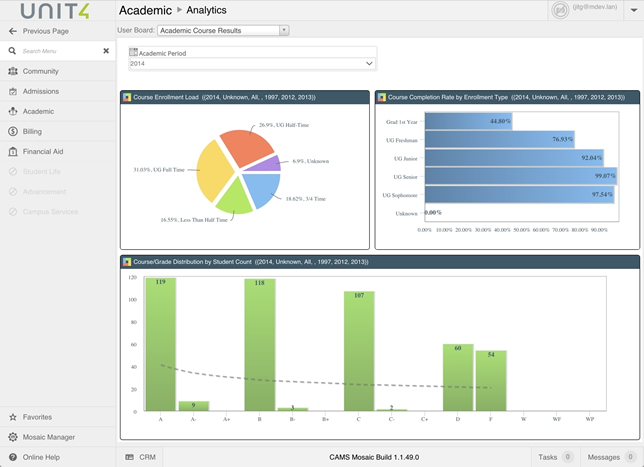SIS Gets Do-Over in Unit4 Release
- By Dian Schaffhauser
- 10/27/15
Almost five months after acquiring a United States-based student information system (SIS) company, international enterprise resource planning (ERP) provider Unit4 is set to launch a new education offering of its own. Unit4 Student Management provides back office applications for managing five student-centric processes: admissions, academics, financial aid and scholarships, billing and student and faculty portals. The announcement was made during the Educause Annual Conference, taking place this week in Indianapolis.
The company, which acquired Three Rivers Systems in June, said the new release is "built from scratch" and can be deployed as a cloud-based solution on-premises, publicly or privately.

Among the features are:
- A common constituent-relationship management (CRM) platform that allows the institution to track the student from potential applicant through to student, graduate, alumnus and donor;
- Admissions technology with customizable workflows to automate prospect outreach campaigns;
- Built-in analytics with support for dashboard set-up and drill-down; and
- Flexibility in course registration to accommodate multiple course start and end dates or course types.
Additional institutional functionality is provided by Unit4's existing offering. Business World ERP performs financial management, procurement and human resources and payroll services.
The company said the new application would be available for general release in North America in the first quarter of 2016. Localized editions will be available worldwide in the second quarter of next year.
"Unit4 has the experience and the vision to deliver the innovation required to become the global leader in the sector," said Amir Tajkarimi, founder of Three Rivers and Unit4's senior vice president of global education. "Students, faculty and staff typically experience a 'digital downgrade' in their campus life, using dated systems that don't meet their high expectations. Nowhere is this more apparent than with currently-installed SISs, which on average are over 13 years old. These expensive-to-maintain legacy systems were built before the emergence of new technology and business models that have reshaped education. With the introduction of Unit4 Student Management, institutions now have an alternative."
About the Author
Dian Schaffhauser is a former senior contributing editor for 1105 Media's education publications THE Journal, Campus Technology and Spaces4Learning.